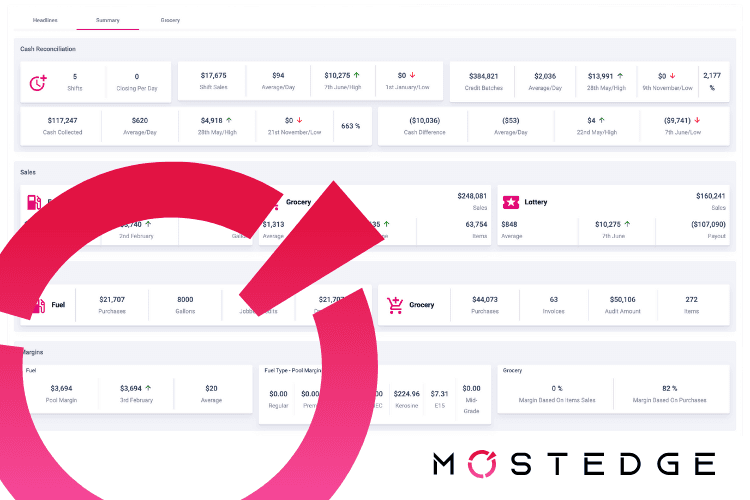Adapting to Consumer Behavior: How Convenience Stores Can Thrive in a Digital-First World

Adapting to Consumer Behavior: How Convenience Stores Can Thrive in a Digital-First World
The convenience store industry is undergoing a digital transformation as consumer expectations evolve. In a world where technology drives daily interactions, customers increasingly expect seamless shopping experiences powered by digital tools. From mobile loyalty programs to self-checkout systems and online ordering platforms, the c-store industry is primed for growth by embracing these innovations. The challenge for many c-store owners, especially small and medium sized operations, is figuring out how to integrate these digital tools in a way that boosts sales and enhances customer loyalty while maintaining the essence of their brick-and-mortar stores.
The Digital Shift in Convenience Stores
Digitalization has impacted all aspects of retail, including the convenience store industry. Mobile apps, online ordering, and cashless payments have become standard in many sectors, and c-stores are no exception. According to a report from NACS (National Association of Convenience Stores), digital transactions are growing steadily in the industry, with more than 30% of all purchases in convenience stores being digital as of 2023. Customers, particularly millennials and Gen Z, are driving this shift, prioritizing convenience, speed, and personalization in their shopping experiences.
Not only are more people using digital tools, but their expectations are also evolving. Shoppers expect rewards for their loyalty, instant access to deals, and streamlined shopping experiences that reduce friction at checkout. This shift in behavior presents both a challenge and an opportunity for c-stores. The key is to meet customers where they are: online and on their mobile devices.
The Benefits of Digital Tools for C-Stores
Integrating digital tools into convenience store operations offers a range of benefits, from improving operational efficiency to enhancing customer engagement. Here are some of the key advantages of embracing digital solutions:
- Enhanced Customer Engagement: Digital platforms allow stores to engage with customers more effectively. By utilizing mobile loyalty apps and push notifications, c-stores can send personalized promotions and reminders directly to their customers’ phones, keeping the brand top of mind. Mobile loyalty programs, such as trunow, allow retailers to provide customers with cashback on purchases, increasing brand loyalty and encouraging repeat visits.
- Improved Shopping Experience: Digital tools streamline the shopping process. For instance, self-checkout systems reduce wait times, while online ordering platforms enable customers to pre-order items for pick-up. This flexibility enhances the overall experience, ensuring shoppers feel valued and their time respected.
- Data-Driven Decision Making: With the integration of digital systems such as back office software or scan data programs, stores can collect valuable data on customer preferences and behaviors. This information can be used to refine product offerings, optimize inventory management, and personalize marketing efforts, ultimately improving the bottom line.
- Increased Foot Traffic: Digital tools help put convenience stores on the map, literally and figuratively. Mobile apps like trunow allow customers to browse nearby stores, check out promotions, and earn rewards. This can drive new foot traffic to stores, as customers look for deals and cashback opportunities, helping stores expand their customer base.
Case Studies: Digital Success Stories in C-Stores
Some convenience stores are already capitalizing on digital solutions to enhance customer loyalty and improve operations. One such example is a regional c-store chain that implemented a comprehensive digital strategy, including a mobile loyalty program and self-checkout systems. By leveraging these tools, the chain saw a 20% increase in foot traffic and a 15% boost in customer retention within the first six months.
Another success story is a local c-store that partnered with trunow, a mobile loyalty app that offers customers cashback for purchases. The store experienced a noticeable uptick in both in-store traffic and average purchase size, as customers were motivated by the prospect of earning rewards. For distributors and manufacturers, this kind of app provides a direct line to customers, enable product promotions that can boost sales and visibility across multiple locations.
How to Start Your Digital Journey:
Tips for Small to Medium-Sized C-Stores
For small to medium-sized c-stores looking to begin their digital transformation, the process doesn’t have to be overwhelming. One of the most effective ways to adapt to the digital-first world is by integrating a mobile loyalty app like trunow. The app allows customers to shop for promotions and earn cashback on their purchases, directly increasing their engagement with your store. For retailers, trunow not only drives foot traffic but also improves customer retention by offering a tangible reward for loyalty.
With trunow, retailers can also participate in broader promotional campaigns, making their store visible to a larger audience. For distributors and manufacturers, trunow offers an opportunity to promote products directly to engaged customers, driving both sales and brand awareness.

Final Thoughts: Thriving in a Digital-First World
The c-store industry is in a prime position to embrace digital transformation. By adopting mobile loyalty apps, self-checkout systems, and online ordering platforms, c-stores can enhance customer experiences, drive foot traffic, and increase sales. The key is to start small, choosing the tools that best fit your store’s needs, and gradually build a digital ecosystem that aligns with your customers’ expectations.
With solutions like trunow, convenience store owners can not only meet the demands of today’s digital-first customers but also create a more profitable and sustainable business for the future. In the fast-changing landscape, staying ahead of consumer behavior is crucial, and digital tools offer the roadmap to success.



